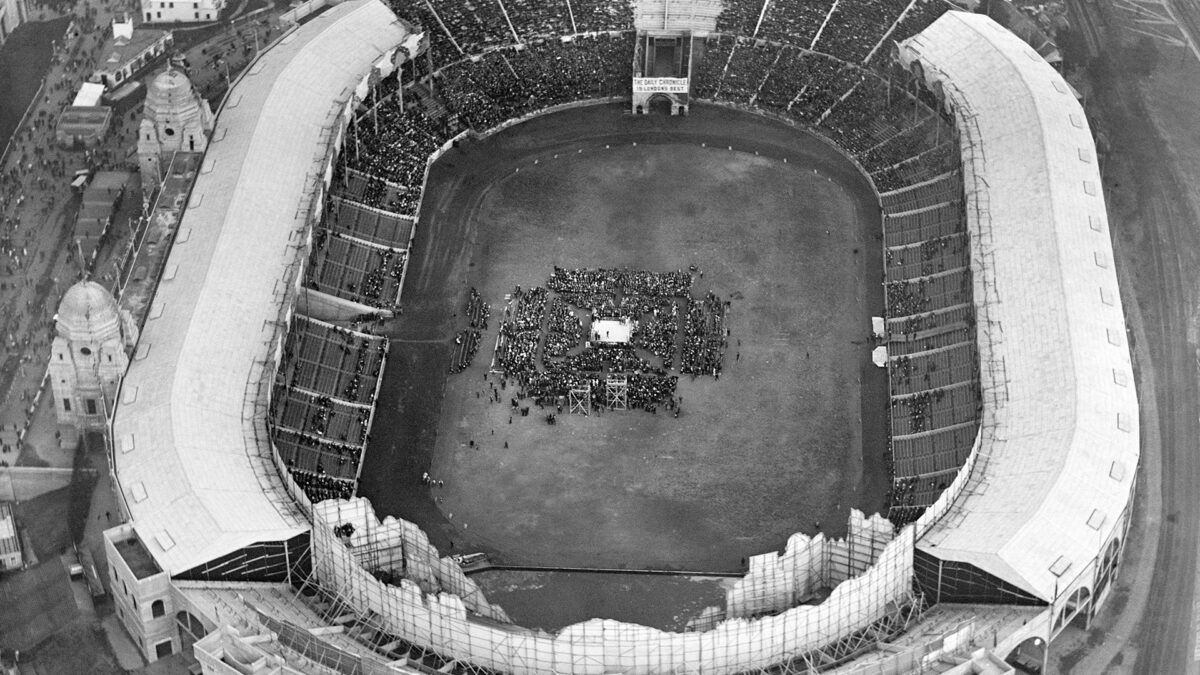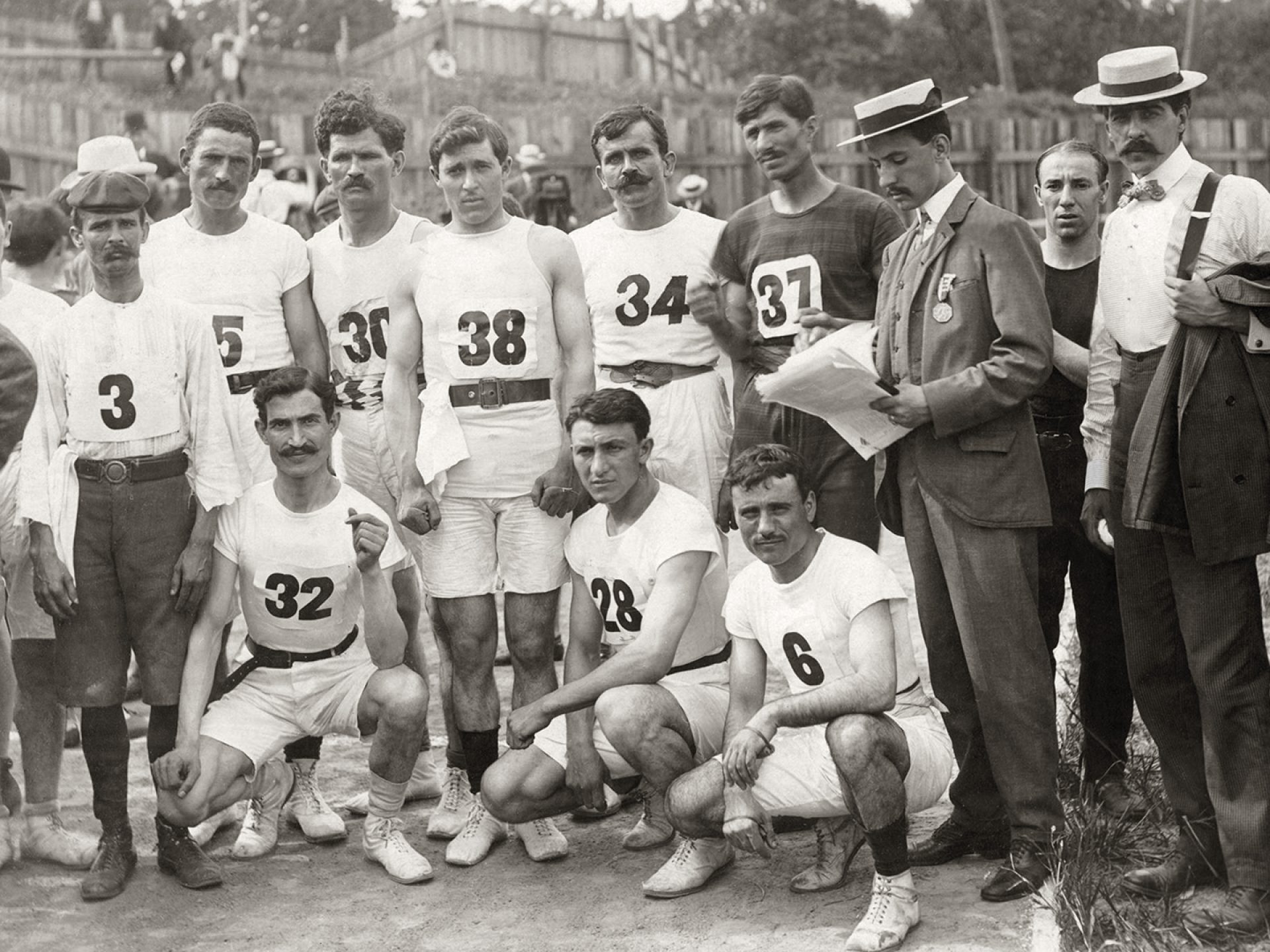Magazine

May 12, 2021

This article was originally published in Populous Magazine, our biannual publication featuring news and trends from the worlds of sport, entertainment, and major public events. Find out more, and sign up to receive a free copy, here.
The men’s marathon at St. Louis in 1904 remains one of the most flabbergasting events in the history of the Olympic Games. Eventually won by American Thomas Hicks, the race took place on “the most difficult [course] a human being was ever asked to run over”. Only 14 of the 32 competitors crossed the finish line. The victor’s time of 3:28:45 was the slowest of all the Olympic marathons since 1896 by almost 30 minutes – despite the course being nearly two miles shorter than today’s distance.
However, was it really that extraordinary? After all, the Olympics have offered up some eye-watering moments in the decades since. Here are four major upsets from the 1904 race and their echoes down the generations.
The organisers of this year’s Tokyo Olympics have moved the marathon to the northern city of Sapporo to avoid the blistering heat and humidity of summer in the capital. In August 1904, marathon runners had no choice but to compete in the sweltering heat of the Midwest summer. Temperatures soared above 40 degrees Celsius and humidity was more than 90 per cent.
But the heat was just the start of their problems. The course scaled seven hills with lung-busting ascents. Thick dust was churned up by the wheels of the support cars, causing the runners to choke. California’s William Garcia nearly bled to death from internal haemorrhaging when dust tore his stomach lining.
To make matters even worse, the event organiser James Sullivan was researching the effects of dehydration and permitted the athletes just two water stations, and none at all after the halfway mark. (While this sounds strange today, regular hydration during a marathon only became a standard procedure in the 1970s.)
Mercifully, nobody died in St. Louis. However, eight years later in Stockholm, the Olympic marathon claimed its first (and only) fatality when Portuguese runner Francisco Lázaro collapsed after 19 miles. He had covered his body in animal fat to prevent sunburn. Unable to sweat properly, he fell victim to over-heating and severe electrolyte imbalance. His memorial service in the Olympic Stadium attracted a crowd of 23,000 well-wishers.
Two South African runners, both members of the Tswana tribe, competed in the race. Len Taunyane and Jan Mashiani both ran barefoot, finishing 9th and 12th respectively. In recent decades, of course, African athletes have emerged as the dominant force in long-distance running.
Taunyane might have finished higher still, had he not been chased a mile off course by a pack of wild dogs. Exactly a century later, the marathon in Athens was also marred by outside interference. A protester (former Irish priest Cornelius Horan) pushed Brazil’s Vanderlei de Lima off the road when he was leading the race, just 15 minutes from the finish line. The latter hobbled home in third.
Long before the days of anti-doping testing, athletes at the 1904 Games were allowed to pep themselves up at their own risk. The winner Hicks was no exception. Seeing him fading fast with seven miles to go, his support team ignored his pleas for water and fed him a mixture of strychnine and egg whites, which he downed with a brandy chaser. Hallucinating that the finish line was still 20 miles away, Hicks staggered into the stadium. His minders carried his broken body over the line, where he duly passed out for an hour.
Cuban runner Andarín Carvajal chose more natural stimulants. Wearing a long shirt and leather boots, he was making good progress, refreshed by a pair of peaches that he pinched from a passing car. The story goes that he might have won, had he not eaten an unripe apple in an orchard before taking a nap to sleep off the resulting tummy-ache. The Cuban eventually crossed the line in fourth place, none the worse for his ordeal.
American Fred Lorz hit the headlines for all the wrong reasons in St. Louis. The New Yorker started strongly in the marathon, but soon suffered from stomach cramps and decided to hitch a ride back to the stadium. The car broke down and, by the time it was fixed, Lorz was feeling a whole lot better. He jogged into the stadium and crossed the finish line in just over three hours. The cry went up that an American was the winner and Lorz played to the crowd.
The US President’s daughter, Alice Roosevelt, placed a wreath on his head, but only stopped short of presenting the gold medal when Lorz was revealed as an impostor. The cheers quickly turned to boos. Lorz claimed it was only ever a joke, but few saw the funny side. He was banned from competing for life. (The sanction was lifted after a heartfelt apology and Lorz won the Boston Marathon the following year.)
He wasn’t the last impostor. During the 1972 Games in Munich, student Norbert Sudhaus charged into the stadium dressed in full West Germany running kit – just in front of the genuine leader. The crowd began cheering for one of their own, while the American Frank Shorter watched in confused panic as Sudhaus crossed the line first. The prankster just kept on running and disappeared back down the tunnel. Shorter was proclaimed the winner, but was cruelly denied his moment of glory.
The marathon of 1904 proved so disastrous that it was nearly scrapped from the Olympic programme for good. Yet, the race survived – and would eventually become one of the Games’ most popular events and a source of inspiration for millions of amateur runners around the world.
Lorem ipsum dolor sit amet consectetur, adipisicing elit. Non facere corporis et expedita sit nam amet aut necessitatibus at dolore enim quis impedit eius libero, harum tempore laboriosam dolor cumque.
Lorem, ipsum dolor sit amet consectetur adipisicing elit. Illo temporibus vero veritatis eveniet, placeat dolorem sunt at provident tenetur omnis, dicta exercitationem. Expedita quod aspernatur molestias eum? Totam, incidunt quos.